Believe it or not, herbs are a lot more complicated than you think!
To expand, in case you don’t know, an herb is a plant whose seeds, flowers or leaves are used for medicines, perfumes, and food flavoring.
When you think of an herb you may not think of vibrant and beautiful flowers? The reality is many varieties of herbs produce beautiful flowers in many colors, specifically there are herbs that produce blue flowers!
Of course, there are some lesser-known blue flowering herbs, however, here are the top five herbs with blue flowers that will add beauty to your home garden or planters, while also serving practical purposes you will want to have around!
Five Herbs With Blue Flowers:
- Sage
- Forget-Me-Nots
- Borage
- Hyssop
- Rosemary
If you are like me, a keen gardener, and want to determine which herbs could meet your needs, away we go my friend! I believe this article will answer all your questions!
What You Will Learn: In this article we will go through each herb and learn their uses and medicinal value. We will also see the flowering of each plant including when expected flowering may occur and during which flowering season.
#1. Sage: The Blue Healer.
Blue sage as it’s often called, has and still is a very popular herb because of its healing properties.
Today, many people may use dried sage as a cleanser of spirits, particularly when moving into a new space.
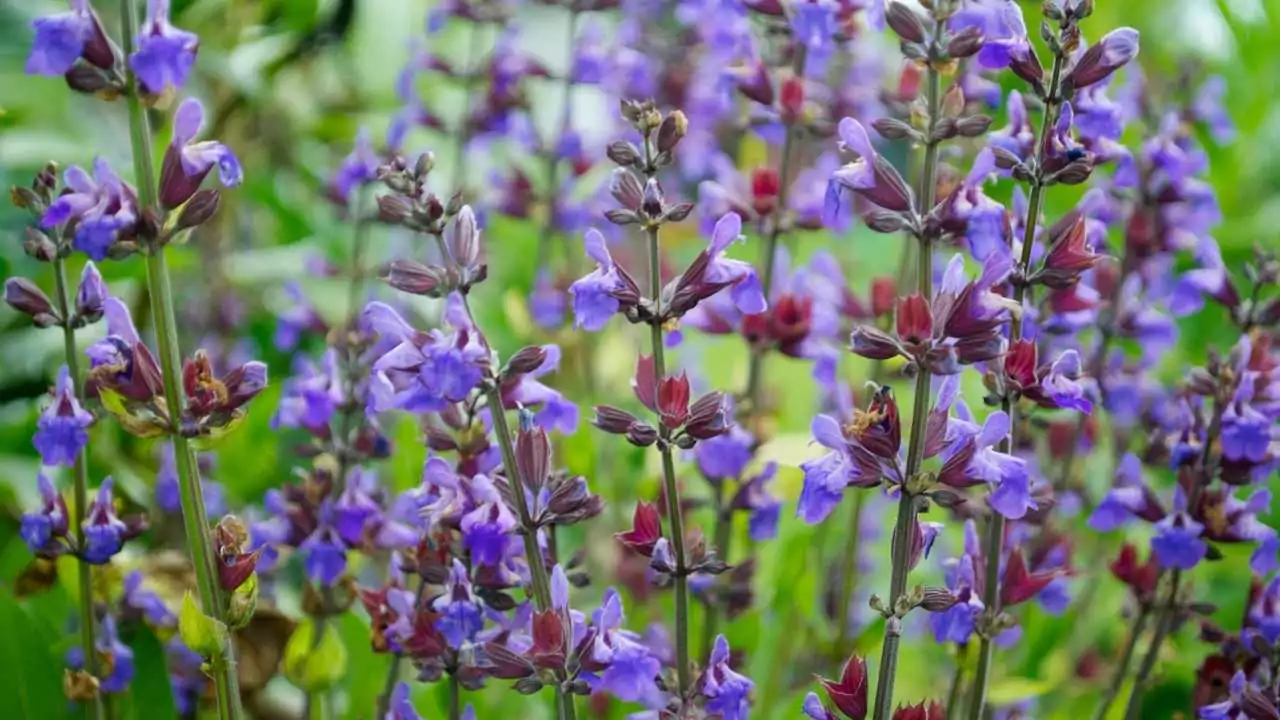
Even if you don’t agree with the practice of using herbs that expel dormant ghosts, sage inspires so many great culinary delights! Sage can often be found in the herb aisle of your local supermarket because it is recommended in a fair amount of culinary creations.
But the real best thing about sage, has to be the smell!
The fragrance is amazing, and if you choose to grow it in a pot on your windowsill, or in your backyard, every time you walk by it, it will surround you.
When it is grown from seed sage will:
- Take about two years to flower.
- At which point expect to see vibrant blue flowers at the very beginning of every summer.
When you see sage flowers, they should look almost exactly like lavender.
They grow in small trumpets off the stem, creating a long slim cone. All you have to do, is inhale the air, and that scent will continue to lead you right to the flowers.”
#2. Forget-Me-Nots: The Gift that Keeps Giving.
Do you ever wonder why are they called forget-me-nots?
Because their seeds can lay undisturbed in the soil, essentially forgotten, for years, and then suddenly it sprouts, and in about two years it will produce lovely blue flowers.
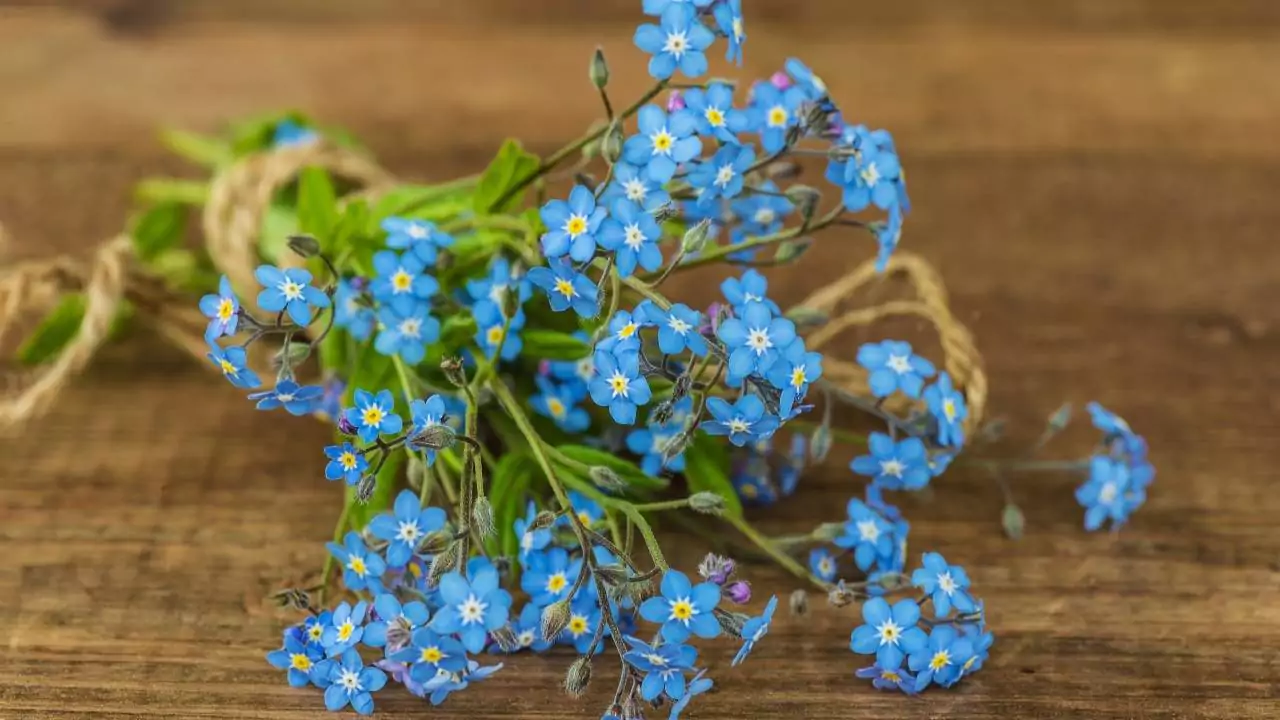
While some botanists will say that forget-me-nots can be eaten, there are traces of a chemical that can be dangerous to health, if taken in large quantities.
They could be far better served infrequently as an adornment for cakes or salads as opposed to a daily staple.
Additionally, they have many medicinal properties to include closing up the tissue in open wounds, but if you are going to not be using them in such manner they are nice to have around as decorative flowering plants in your home.
Beautiful Herbs: The small blue flowers grow profusely from each plant producing a carpet of dark or light blue in your backyard.
#3. Borage: The Cucumber’s Cousin.
While not physically as robust as a cucumber, the borage herb resembles its flavor and scent, and can be synonymous with the Mediterranean diet, because this is where it grows.
It can be used in:
- salads
- with cold drinks
- and even cooked with other assorted green leaves.
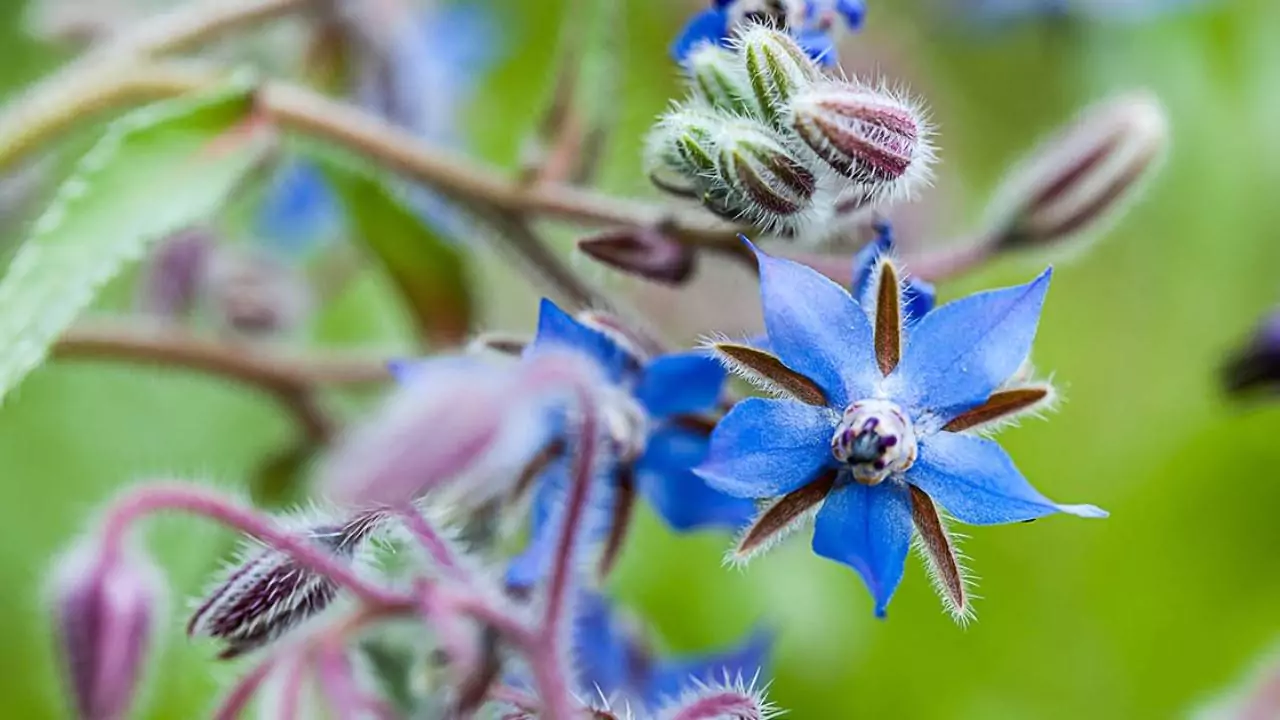
Borage does not require any anxiety, if planted from seed it will commonly bloom in approximately eight weeks if timing is right.
Soon after they bloom, you may discover you have a new family in the neighborhood of honey bees pollinating your garden since bees are irresistibly attracted to borage.
The bright blue star-like flowers of borage will bloom from June to August but keep in mind that borage can grow lanky – up to 3 ft!
Meaning, even you enjoy the annual bloom, they may start taking up unnecessary space in your backyard or home garden.
#4. Hyssop: Delicious to You; to Bees!.
Next, we have another wonderful herb that is native to the Mediterranean that flowers violet-blue every year!
Hyssops will germinate in the first two weeks after sowing, and then will flower that same year between late summer and early fall months.
In addition to its beauty, hyssop is generally known for its oily leaves that provide a sweet, spicy and pleasant chartreuse-like flavor and is great to add to sauces, soups and pretty much every meal!
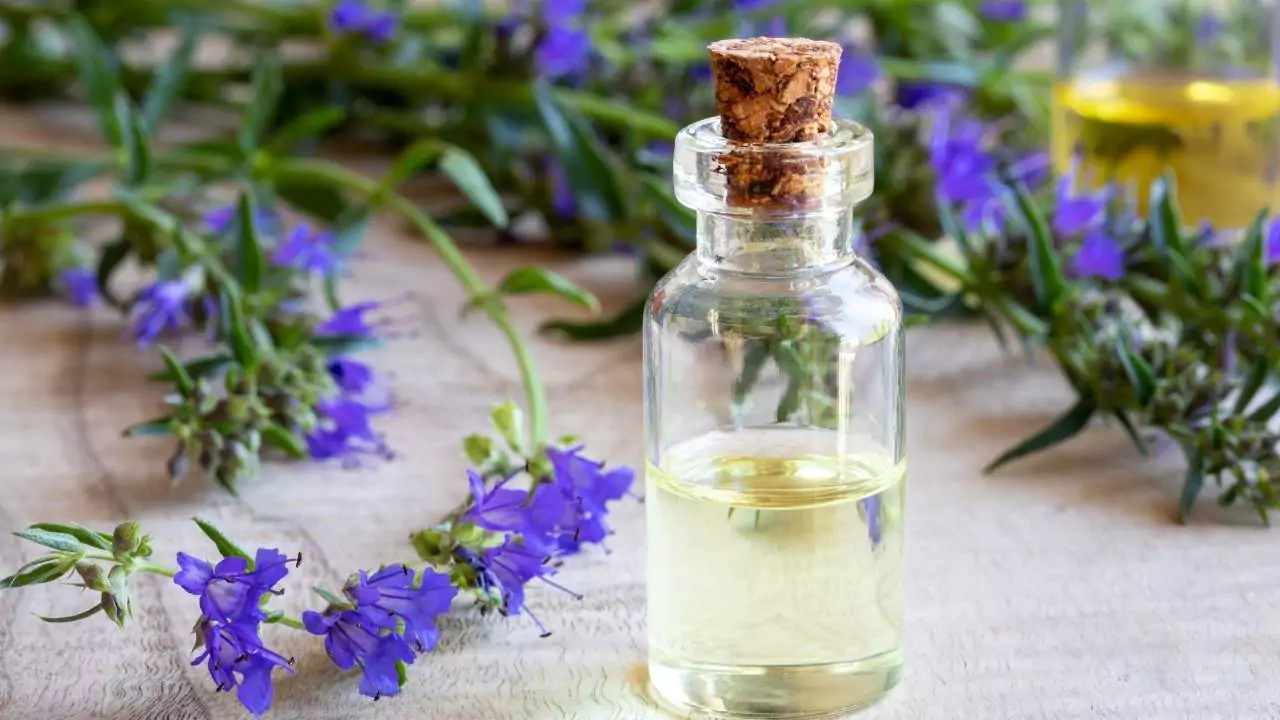
It can also grow to approximately 2 ft high, almost as large as the borage! So be aware when planting so it has plenty of room to grow.
A great thing about hyssops is that they are also great for pollinators!
Bees and butterflies will come from miles away to visit this herb’s blue flowers and will therefore spread the pollen throughout your garden.
If grown from seed, your hyssop plant will likely flower about 85 days later, so you won’t even have to wait very long to see those magical flowers!
Take a Closer Look: in order to spot a hyssop plant that is flowering, it might be a little difficult to see the blue flowers separately from those of the sage plant, but you can tell a slight difference as they are more “spikey” flowers and generally fuller.
#5. Rosemary: Good for the Mind, Good for Lasagna.
Rosemary is likely the most recognizable herb since it is so widely used for Italian cooking! Rosemary goes great with:
- Pasta,
- Lasagna,
- Roast Potatoes,
- Soups, And Much More!
But, you may not have realized that rosemary has beautiful blue flowers and its scent has been shown to enhance memory.
Rosemary essential oil is frequently suggested for use in an oil diffuser while you are studying, or trying to learn something new because it helps your brain retain information, and it smells wonderful!
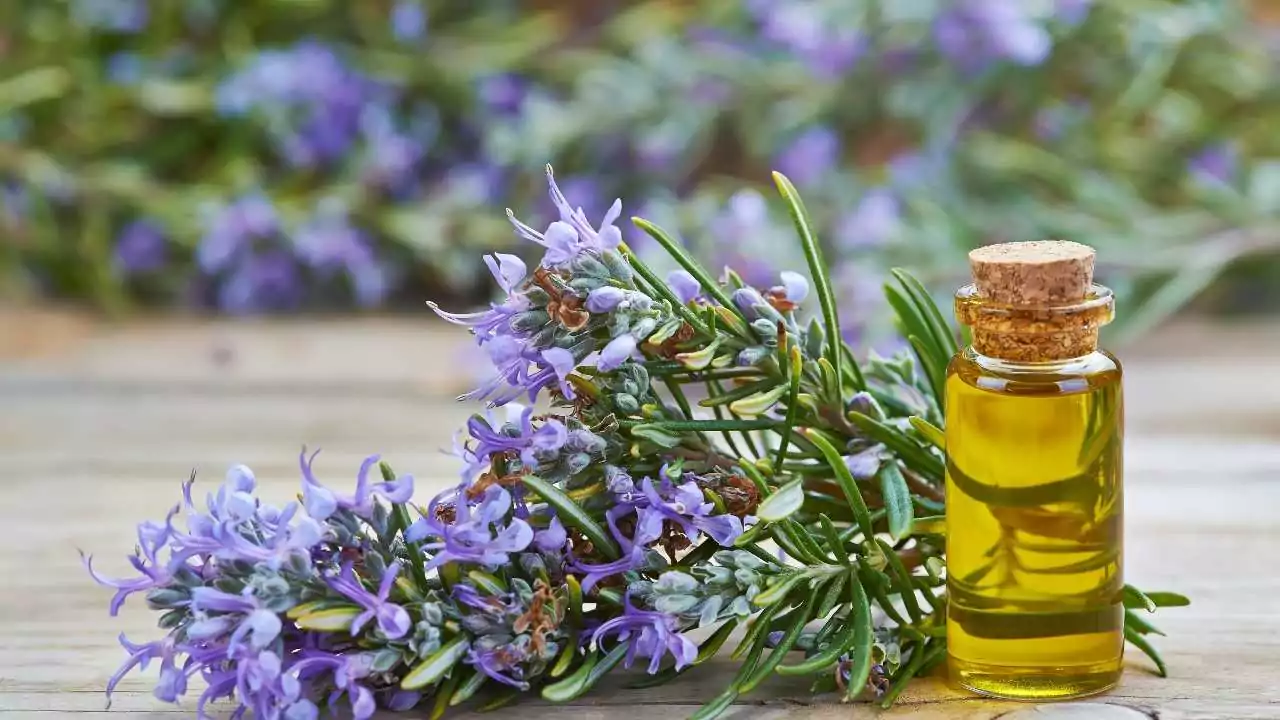
You can’t go wrong planting rosemary and it will do great as either potted plants or in your back garden, so you can benefit from its taste, aroma, and medicinal properties.
Not only all of this, but rosemary also flowers with spectacular blue flowers twice a year!
In the spring and then again early summer, you will likely see small blue flowers of rosemary amongst the herb stems. They are very cute flowers!
You might also run into some issues with your rosemary blooming too; to help your rosemary flower, make sure it gets plenty of sunshine and does not get pruned too much in the spring.
Final Thoughts
Herbs are easy and incredibly useful plants to grow anywhere in or around your house.
They are notoriously very resilient and are not overly difficult to keep alive.
While of course they each have many characteristics that can make your food and health better, you may not have known they can even produce some beautiful ornamental flowers that can help brighten your home and your day!
These five herbs with blue flowers are certainly a few of our favorites, and you can easily add a few other herbs with flowers of every color to create a colourful yard or windowsill that is useful!